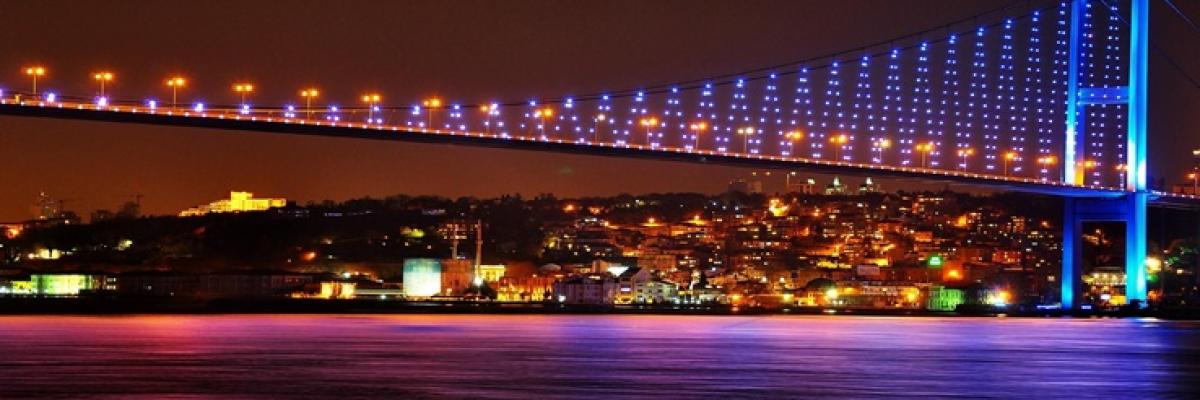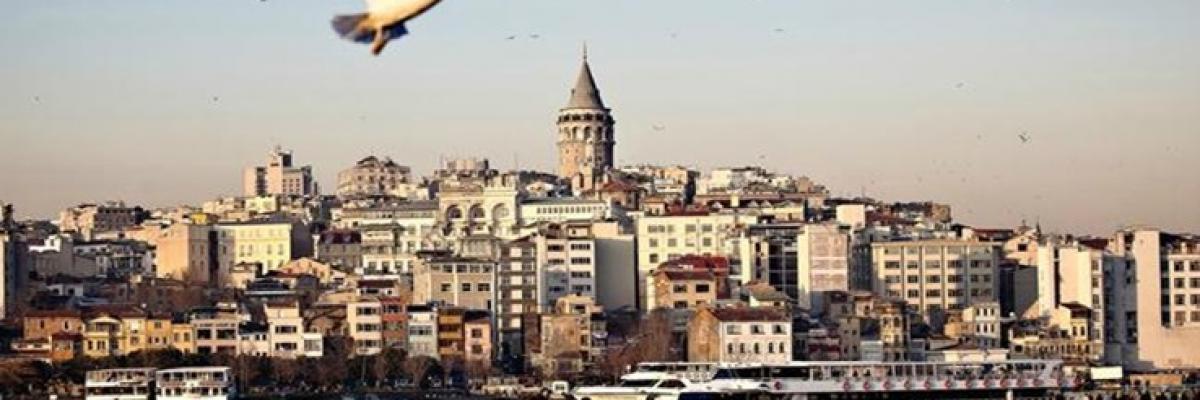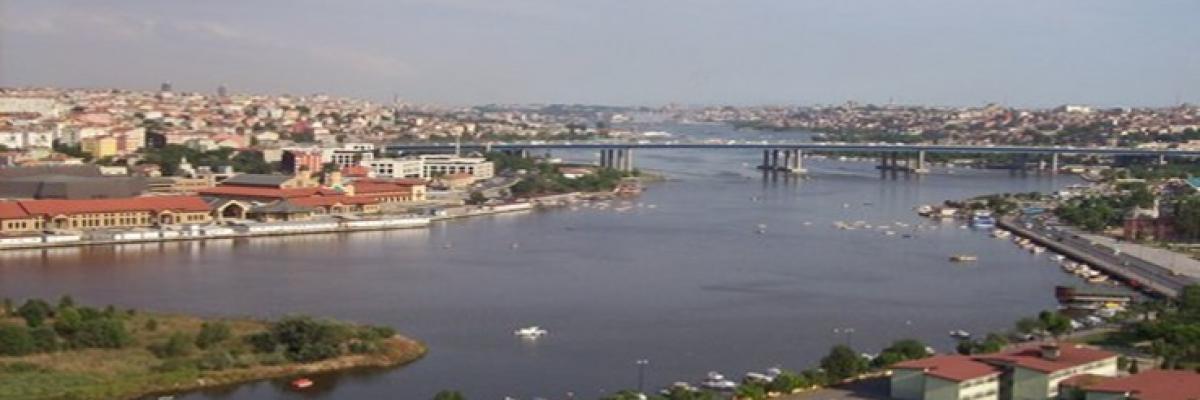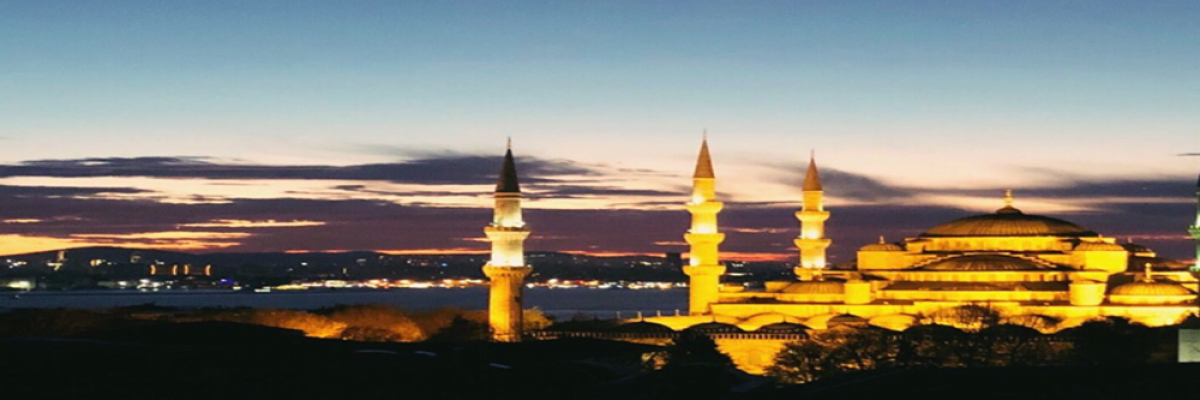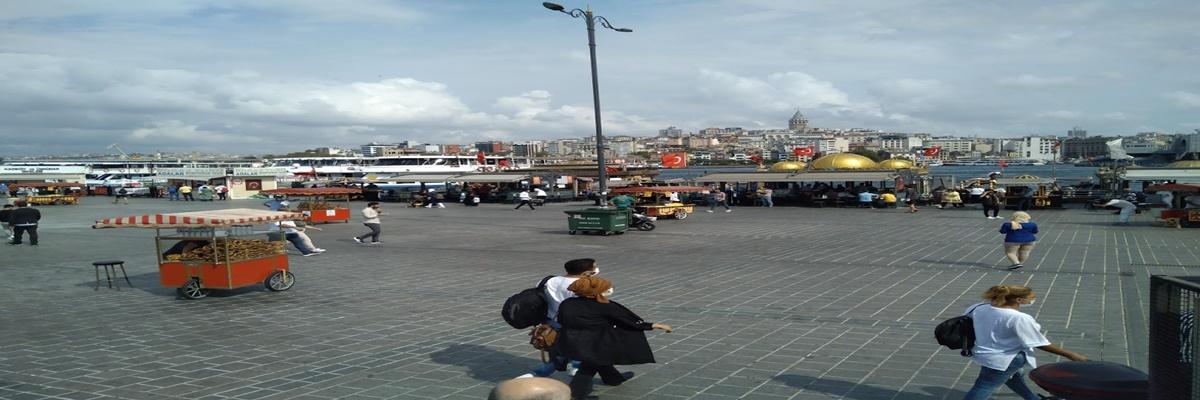Bıography Of Mimar Sinan
Posted on 24 November, 2020 by Administrator

BIOGRAPHY OF MİMAR SİNAN
Undoubtedly, the biggest name in the history of Turkish architecture is Mimar Sinan. Sinan is one of the greatest architects of not only Ottoman architecture, but also of the world. The works of this great architect, whose identity, when he was born and raised, and went far beyond geographical boundaries, cover an area befitting the size of the empire he is a member of, and continue to be the witness of a wide geographical age that includes many countries and to keep the Ottoman identity alive.
Although it is not known when he was born, it is dated before 1491. He was born in Kayseri Ağırnas as a child of a Christian family. However, "it was realized that he was capable enough to join the whole as a Muslim designer bathed in Ottoman culture, and the necessary process was initiated to include such a boy in the Ottoman elite instead of being left to his village." After all, it is certain that Sinan, whose ethnic affiliation is discussed, had a strong Ottoman identity.
In the development of this genius, this system and his meeting with Istanbul at an early age has a great role. Sinan, who is considered to have been raised in a school near the Hippodrome / Sultanahmet Square, one of the central points of Roman period architecture, close to Topkapı Palace and Hagia Sophia, visited the Arab and Persian lands in the service of Yavuz Sultan Selim in Tezküretü'l-bünyan, which is accepted as his autobiography. states that he wandered around and returned to Istanbul again. He participated in the Egyptian expedition, which resulted with the participation of the Sultan to the Ottoman borders of Egypt and the Hejaz region, recognized the architectural environment, recognized the ancient structures and Egyptian pyramids as well as the Seljuk and Safavid structures.
His participation in the expeditions greatly improved Sinan's manners and knowledge, and enabled him to demonstrate his ability to show himself and his farsightedness.
He participated in the campaigns of Sultan Süleyman the Magnificent to Belgrade in 1521 and Rhodes in 1522 as janissary infantry, and later he was elected as a secban on horseback. Sinan, who participated in the Battle of the Mohaç (1526), was given the chairmanship of his novice boys. Subsequently, Kapıkulu became a pedestrian and the head of the mainspring was appointed. He drew attention with his success in the German campaign in 1532 and Irakeyn in 1534. However, after one of his last successes, he attracted attention. He participated in the Corfu expedition as haseki in 1537 and the Moldavian expedition in 1538. During this expedition, he enabled the army to cross the bridge with the bridge he built on the Prut River. This bridge built by Sinan in thirteen days has become a legend. He was 48 years old when he took on this task. He opposed Lütfi Pasha's idea of building a tower to protect this bridge with a strategic approach and argued with the Pasha. Even though he was worried about his future for this reason, Grand Vizier Lütfi Pasha showed that his concern to appoint himself instead of the deceased chief architect Acem Alisi was unfounded.
In 1537, Sinan the Architect's main aim was architecture, and with this appointment, all obstacles in front of him were removed. His next signature is now “el-fakur Sinan sermon-ı hassa”. The expression "el-fakîrü'l-hakîr Sinan" is engraved in the middle of the ellipse-shaped seal, and the phrase "bende-i miskîn kemîne derd-mend-i ser-mimârân-ı hassa-müstmend" is engraved around it.
Sinan, who assumed the position of Chief Architect at the age of 48 and remained "Reîs-i mimârân" until his death, knows the progress he has made in his profession with three structures. The first is the Şehzade Mosque, which he called "my apprenticeship work". Completed in 1548, this kulliye completed the first great sultan mosque. The second is the Süleymaniye Complex, which he calls "my journeyman work". With this building, which was completed in 1557, it completed one of the most magnificent buildings of Istanbul and the Ottoman empire. The structure, which he calls "my masterpiece", is in Edirne, II. It is the Selimiye Mosque that he built in the name of Selim. Selimiye was 83 years old when it was completed and was therefore referred to as "Grand".
Sinan, who went to Hajj in 1584, was around 100 years old on his return from the pilgrimage and continued his duty with great enthusiasm until 1588, when he passed away. The gravestone inscription written by his close friend Sâî Mustafa Çelebi ends with the following sentences:
"Passed in this moment, pîr-i mi‘mârân Sinân from the world."
When we take the qibla as the basis, he is buried in the tomb of the Süleymaniye Complex and is like a modest signature on a magnificent work.
The undated endowment sheds light on questions about his property and generation. According to this, his wife Mihrî died while he was alive, and his son Mehmed Bey became a martyr. According to the charter, he continued with two cheerful daughters and two grandchildren. Eighteen houses, thirty-eight shops, lands, houses, garden, boathouse, waterway, mill, has endowed many assets and 300,000 coins. But what really keeps Sinan alive and beyond the ages is the hundreds of works he has built.
Different lists are given regarding the number of works built by Mimar Sinan. However, by comparing the sources of the period, it is possible to increase the list of works belonging to him up to 452. However, it is necessary to evaluate this list by taking into account the wide geography in which it has spread, the transportation and technological opportunities of the era, as well as its life. Mimar Sinan, who lived for about 100 years, did not build each of these many works himself, did not pay attention to the details, only drew the plans of some buildings, evaluated the projects. Reîs-i mimârân; As the chief architect, he supervised and managed the processes through his assistants. This situation shows not only the organizational success of the Ottoman Empire, but also the success of Mimar Sinan's management, organizer, management and administration. At the same time, it shows the existence of other architects who won his admiration in the Age of Sinan, who were able to do business at a high level, and performed their duties under his supervision. Dâvud Ağa and Sedefkâr Mehmed Ağa are just two of them.
New solutions, inventions in architecture, and above all, speaking of proportions, reached new dimensions that can be called classical with Sinan, and this master of the field of architecture quickly and strongly reflected the transcontinental tendencies of the empire to the outside world. This style put an end to the anarchy of forms, especially on the states and cities where it settled in the strongest way, and revealed its own identity on a world scale. This identity has left traces on the artistic fate of the regions where the Ottoman order was dominant and sovereign.
Mimar Sinan is known as an architect with his prominent identity. But architecture alone is not enough to define it. It is also an engineer, a good logistician, city designer, planner, manager, etc. He also has many features and knowledge and the most important indicator of this is his works.
The architect does not only live in the period he lived and the work he built. There is "Sinan Age" in Ottoman and World Architecture. Likewise, while still living in Ottoman architecture, a powerful Sinan School was formed. Thus, Mimar Sinan continued its influence in Ottoman architecture and its guidance in the following centuries, with his students and works. The agenda he has created in today's architectural pursuits and discussions are the most vivid examples of his influence, as well as his mastery.

Mimar Sinan's Legends
Sinan, the chief architect of a great world state, built striking works in Istanbul, the center of the world, in the 16th century, when his military, political and economic power was at its peak. Symbolizing the Classical Age of Ottoman architecture, Sinan realized his grand complexes and original mosque designs during this period. Süleymaniye, designed by Sinan after the Şehzade Mosque, is considered to be the largest and most comprehensive complex in the history of Turkish architecture as a collection of structures with different functions. By the time of his death, Sinan's fame had now transcended the borders of an entire empire. Sinan did not fit into his age and echoed as an immortal folk song.
The life of Sinan, who gained great reputation since this date, and his works have been the subject of stories and rumors among the people, and later these stories and rumors turned into legends (legends). He was assumed to be an epic hero and became the subject of stories circulating among the people like a legend. Some of these myths are listed below.

The Great Love of Mimar Sinan
The only daughter of Sultan Süleyman the Magnificent, born from his wife Hürrem Sultan, was named Mihrimah. It was given a name consisting of the names Mihr, which means Sun in Persian, and Mah, which means Moon. Mihrimah Sultan, the daughter of Kanuni who was raised a hand doll and rose baby and raised with grace, is a beautiful girl in the world.
It is rumored that Mihrimah Sultan ordered Sinan, the chief architect of the palace, to build a mosque in Üsküdar. Thereupon, Sinan built the work called Iskele Mosque in the name of Mihrimah Sultan. However, on this occasion, Sinan falls in love with the sultan's only daughter. However, Rüstem Pasha, Governor of Diyarbakır, aspires to Sinan's great love, Mihrimah Sultan. This news spread rapidly among the public and rumors circulated by word of mouth. Rich but stingy, Rüstem Pasha is also older than Mihrimah Sultan. Moreover, Rüstem Pasha suffers from leprosy. These rumors spread to the ears of Süleyman the Magnificent, the sultan of the world.
Kanuni, who wants to marry his daughter to Rüstem Pasha, is very bored by these rumors. To find out if Pasha has leprosy, he sends the chief doctor of the palace to Diyarbakır. The chief physician, who examined Rüstem Pasha, who was the Beylerbeyi, found a couple of lice in Pasha's robe. The situation becomes clear because there will be no lice in lepers. Thus, Rüstem Pasha was appointed as the Grand Vizier and married to Mihrimah and became the son-in-law of the sultan.
It is not known whether the story is true or not, but the couplet spoken by a poet implies the accuracy of this narration. This couplet of two lines in the sources is as follows:
The good fortune of a person who will die
Even the kehlesi the scene of the moment works
So if lice appear on the man, it works according to the place. That's why Rüstem Pasha was nicknamed "Kehle-i reputation or Kehle-i İkbal". This means lice that earn prestige or wealth.
When Kanuni marries his daughter Mihrimah to Rüstem, Sinan's love continues to scorch his heart. 14 years after Üsküdar Mihrimah Mosque, Sinan receives a second mosque order. Sinan sets out to work for the order of Mihrimah, whom he loves and loves the sultan, this time. He chooses another high hill of Istanbul for him: He decides in Edirnekapı, at the bottom of the city wall, in a place that is almost isolated. In a secluded, lonely and desolate neighborhood, Mihrimah designs an immortal work for Sultan. The high dome of the mosque, which receives light from all four sides, dominates the whole building. The noble stance and simple beauty of the monumental dome symbolized Mihrimah Sultan. There is a lone minaret next to it, just standing guard. It is rumored that Sinan expressed his love for the sultan of heart in this unique design. Expressing this love in the interior decoration of the mosque, Sinan is said to reflect the lace of Mihrimah's writing in the colored pencil work and plaster decorations.
It is also rumored that the sun sets behind the silhouette of the Edirnekapı Mosque, and the moon rises between the minarets of the mosque in Üsküdar on March 20-22, when the day and night are equal. In these legends, which are further developed in the imagination of those who are keen on the legend, it is told that the daughter of Kanunî was named Mihrimah because the mihr (sun) and mah (moon) appeared at the same time.

Reverse Tulip
When Sinan ordered a mosque from Sultan Selim II, he tried to find a suitable place. Sinan was the owner of the place he liked for the mosque, which the sultan planned to build in Edirne. At that time, there was a tulip garden in the favorite place for the mosque. Sinan liked the present location of the Selimiye Mosque, but getting the consent of the landowner was not as easy as it was thought. When the owner of the land did not want to give the place, Sinan came to the land in Edirne on the return of a Balkan expedition with Sultan Selim II. When the woman sees the great sovereign before him and hears the same offer from him, she has no choice but to accept it. However, he accepted this with one condition. The woman wants to use tulip motifs in the mosque and to remember that this place was once a Tulip Garden. This request was accepted by Selim II and Mimar Sinan was instructed to fulfill this request.
Mimar Sinan reluctantly fulfills the wish of the woman and runs it on the inside of the left front thin marble leg of the muezzin loge in the middle of the mosque, approximately 5 cm tall and upside down. According to the legend, the tulip motif operated by Sinan indicates that the mosque used to be a tulip garden on its land, and its reverse construction indicates the reverse of its owner.

The Story of Eğri Minaret
Another rumor circulating about Sinan in languages is the legend of Eğri Minare. This common story, which we consider important in terms of expressing Sinan's worldview and perspective on events, is as follows:
The construction of the rapidly advancing Süleymaniye Complex is about to be completed. The mosque with four minarets in the complex attracts everyone's attention as the most magnificent structure. However, one of the minarets was crooked for a child playing there. The child approached the working masters and said that one of the minarets was crooked. Thereupon, although the masters tried to explain that the minaret was smooth, they could not convince the child. When the child also insisted that the minaret was crooked, the masters scolded the child by beating him. The kid who was beaten started to cry loudly. Meanwhile, Mimar Sinan reached the construction site and asked what happened to the crying boy. Child:
- When he said that the minaret was crooked, he said, these uncles beat me. Sinan, too, winked at the masters, with anger:
- The boy is right. We will fix the minaret immediately, he made his decision. Thereupon, a worker was taken to the minaret with long and thick ropes. The worker ties one end of the rope tightly to the body of the minaret and hangs the other end down. After a few workers grasped the hanging end of the rope, Sinan asked the boy:
- Which way is the minaret curved? Child:
- In this direction, Sinan ordered them to pull the rope in the opposite direction. After the masters hung a little on the rope, Sinan asked the boy again:
- How is it all right? Child:
- It should take a little more, he gave the answer. This time Sinan:
- Come on, my lions, try a little more, he said. The masters are again hanging from a fake rope. Sinan asked the boy again, turning:
- How's that right now? Child:
- Yes, uncle, now it is all right, he said. Sinan also said:
- You can now drop the rope. After saying that the minaret was fully recovered, he had candy for the boy and thanked him fondly. Because the child's request was fulfilled, he rushed to his friends playing goodbye. However, all masters and workers look at Mimar Sinan in amazement. Sinan is also aware of this. In order to satisfy their curiosity, Sinan addressed the masters and workers as follows:
- I know you are all in awe and wonder. While there are very simple ways to convince the little boy, is it okay for you big men to beat him up to convince him? Do not forget that the other person is a child. You cannot persuade him, nor can you persuade the public. Now, if this child walks around the neighborhood and shouts and announces that the minaret built here is crooked, the name of this mosque we built remains Eğri Minareli Mosque. But if you convince the child in a way that he / she understands, both he and we will be comfortable. Now do you understand why I behave like that? Thereupon, the masters and workers accepted Sinan the Architect and accepted his mistake.

Gift of Persian King
The extension of the construction of Süleymaniye also led to the spread of various rumors. One of them is the story of Acem Şahı sending gifts. The prolongation of the construction process of the Süleymaniye Complex, where Sinan started, and the fact that the mosque in the center of the complex could not be completed anyway, started to worry everyone. Whispers started to spread from ear to ear on this issue. Supposedly, because the budget of the Ottoman state went bankrupt, you cannot spend on the mosque. The construction of the mosque was stopped because the treasury of the Sultan of Cihan Kanunî was also emptied.
Rumors have now reached the Shah of Iran. Taking this as a golden opportunity, Acem Shah sent a chest full of jewelery made of precious stones to Istanbul by means of his ambassador to help the mosque built by the Ottoman Sultan. The Iranian ambassador went before the Sultan and put the chest full of jewelery in front of the Sultan and said: "The Shah of Iran offers you this valuable jewelry chest for the completion of the construction of Sulaymaniyah."
Angered by these words, Süleyman the Magnificent summoned Mimar Sinan to his presence and said the following in front of the ambassador:
“Look, Chief Architect, the Shah of Iran has sent us precious stones so that we can finish the construction of Suleymaniye. Take these precious stones, add them to the mortar you prepare so that it works. "

Sinan's Hookah
Another rumor about the extension of the Süleymaniye Mosque construction is as follows:
Angered by the fact that the Süleymaniye Mosque could not be completed, Kanuni Sultan Süleyman entered the Süleymaniye construction site with his horse in anger. And what you can see, Mimar Sinan is smoking hookah under the big dome and in the middle of the mosque. The angry Sultan started to be told Sinan:
- Why does my mosque never end? Architect head? Now I understand the reason. It means that our Architect was enjoying himself by bubbling the hookah with his head sitting… The reason is now apparent.
Sinan also said:
- My sultan from the state, my aim is not to have fun by smoking hookah. My intention is to determine the direction of the smoke inside the mosque. Because if it is determined which direction the smears coming out of hundreds of candles burning inside the mosque are going, a soot room can be built on that side. At that time, he said, he could both get rid of the mosque works and make ink from the collected works and give them to calligraphers. Upon this, the nerves of the sultan calmed down and he rewarded him by saying "well done" to the architect.
The myths of the great master Sinan, which are the subject of the stories, carry many messages full of wisdom, ingenuity and lessons.
HİS WORKS:
Justice Palace
Atik Valide Nurbanu Sultan Mosque, Darülkurrası, Hospital, Bath, Imareti, Caravanserai, Complex, Tekke
Atmeydani Ibrahim Pasha Palace
Hagia Sophia Hurrem Sultan Bath
Bali Pasha Mosque
Defterdar Mahmut Çelebi Masjid and Mosque
Curved Belt
Evvelbent (Pasadere Belt)
Gazi İskender Pasha Mosque, Complex, Tomb
Beautiful Ahmet Pasha Tomb
Güzelce (Gözlüce) Belt
Haci Ahmet Pasha Tomb
Hadım İbrahim Pasha Mosque, Complex, Tomb
Haseki Hürrem Sultan Mosque, Hospital, Madrasa, Primary School
Haseki Hurrem Sultan Tomb Suleymaniye
Haseki Complex
Havz Kebir (Large Pool)
Hüsrev Çelebi Ramazan Efendi Mosque
Hüsrev Kethuda Darülkurrası Vefa
Husrev Kethuda Bath Ortakoy
Khosrov Pasha Tomb
Kanuni Bridge
Kapagasi Cafer Aga Madrasa
Kapıağası Haramidere Bridge
Kara Ahmet Pasha Mosque, Complex, Madrasa, Tomb
Kilic Ali Pasha Mosque, Bath, Complex, Public Fountain, Tomb
Mağlova Arch
Mehmet Aga Mosque, Complex, Tomb
Mesih Mehmet Pasha Mosque, Tomb
Mihrimah Sultan Mosque Edirnekapi Bath Complex Madrasa
Mihrimah Sultan Mosque Üsküdar Complex Madrasa Sıbyan School
Chief Architect Sinan Aga Masjid
Molla Çelebi Fındıklı Mosque
Müderris Village (Burrow) Belt
Nişancı Mehmet Pasha Mosque, Complex, Tomb
Pertev Pasha Tomb Eyüp
Piyale Pasha Mosque
Rustem Pasha Tomb, Mosque
Rustem Pasha Mosque Tekirdag
Rustem Pasha Caravanserai
Rustem Pasha Caravanserai Edirne
Rustem Pasha Complex Tekirdag
Rustem Pasha Madrasa
Rustem Pasha Madrasa Tekirdag
Selimiye Mosque, Complex
Semiz Ali Pasha Mosque Babaeski, Bazaar, Madrasa
Sinan Pasha Mosque, Complex, Madrasa, Tomb
The tomb of Siyavus Pasha Child
Sokollu Mehmet Pasha Mosque Azapkapi
Sokollu Mehmet Pasha Mosque Kadırga Complex Madrasa Tekke
Sokollu Mehmet Pasha Darülkurrası Eyüp Complex Madrasa Tomb
Sokollu Mehmet Pasha Caravanserai Lüleburgaz Mosque Bath Bridge Complex
Sokullu Mehmet Pasha Mosque Havsa Complex
Sokullu Mehmet Pasha Bath Edirne
Sokullu Mehmet Pasha Bridge Alpullu
Sultan Selim I Madrasa
Sultan II. Selim Darülhadisi, Darülkurrası, Sıbyan School, Tomb
Sultan Murat Mansion
Sultan Suleiman (Suleymaniye) Mosque
Once upon Süleymaniye Madrasah
Suleymaniye Bath
Suleymaniye Complex
Süleymaniye Madrasah Salis
Süleymaniye Sultan Süleyman Hospital, Reconstruction, Caravanserai, School
Sani Madrasa, Darülkurrası, Darültıbbı, Darülhadisi, Rabi Madrasa
Suleymaniye Tomb
Shah Huben Hatun Mausoleum
Şehzade Mehmet Mosque, Reconstruction, Caravanserai, Complex, Madrasa, Sıbyan School
Şehzade Mehmet Tabhanesi, Tomb
Prince Tomb
Şemsi Ahmet Pasha Mosque, Complex, Madrasa, Tomb
Taşlık Mahmut Pasha Mosque
Tophane Cellar
Topkapi Palace Kitchens
Long Aquaduct
Zal Mahmut Pasha Mosque, Complex Tomb
Zal Mahmut Pasha Madrasa I
Zal Mahmut Pasha Madrasa II
